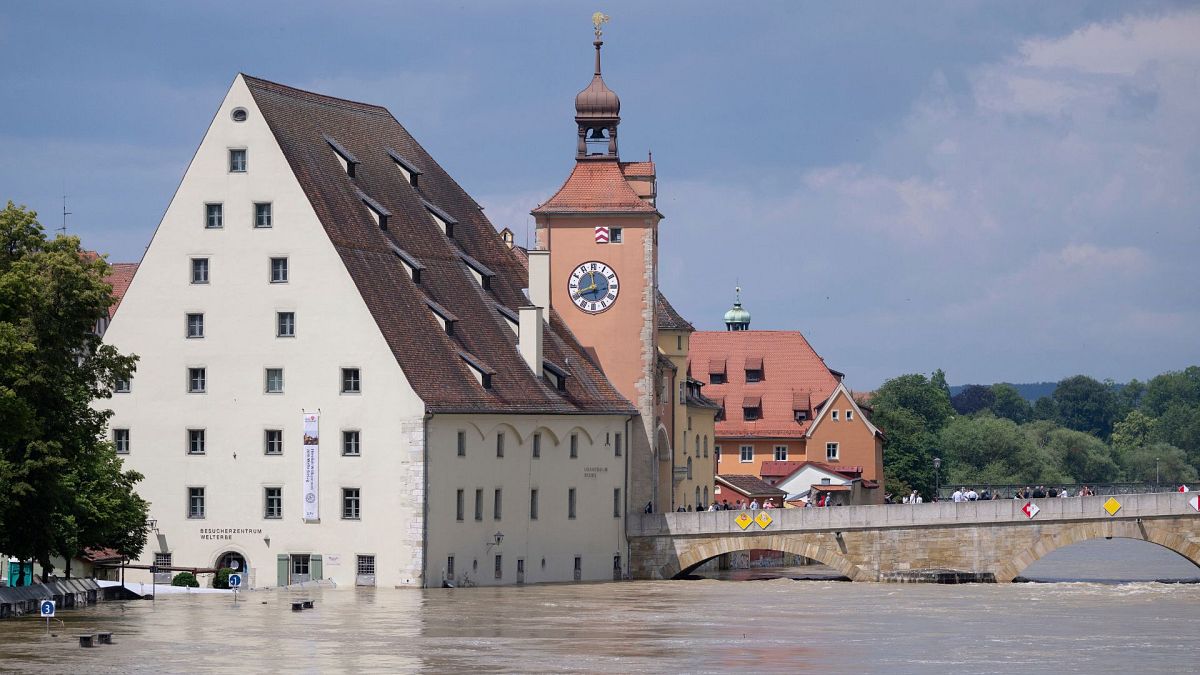Here's what’s behind the record rainfall and how Europe can prepare itself for more flooding.
Germany has just gone through its wettest year on record, with rainfall up by 35 per cent.
An average of 1,070 litres of rain per square metre fell across the country from July 2023 to June 2024, compared with the 1961-1990 average of 789 litres.
It marks the rainiest 12 months since measurements began in 1881, according to Deutscher Wetterdienst - the German Meteorological Service.
“This record was achieved even though none of the past 12 months stood out as a record month,” says DWD’s head of hydrometeorology, Dr Frank Kaspar, showing a steady and persistent increase in rainfall.
It’s a stark contrast to the dryness of recent years, with the past decade seeing below average rainfall.
What’s behind Germany’s wet weather?
Last month, widespread flooding in the southern German states of Bavaria and Baden-Wuerttemberg killed six people - three of them in inundated basements.
The Danube river rose to 5.9 metres, leading the city of Regensburg to declare a state of emergency.
It wasn’t an isolated incident. In December, parts of Hamburg were submerged as heavy rain fell in northern Europe causing the Elbe river to overflow.
Europe experienced 7 per cent more rain than average overall in 2023, with a third of rivers exceeding the ‘high’ flood threshold as sea levels rise. Italy, Greece, Norway, Slovenia and Switzerland were particularly hard hit.
It was also the hottest year on record with ocean surface temperatures soaring to their highest ever, causing evaporation and leading to more rain in low-lying regions.
Making matters worse, warmer air can hold more moisture leading to heavier rainfall as the climate heats up.
How can Europe prepare for further flooding?
One in eight Europeans now lives in an area at risk of flooding, according to a recent report by the European Environment Agency. And the continent is woefully unprepared for what’s to come.
Going forward, the report urges countries to avoid building on floodplains and riverbanks, and to leverage natural solutions to the problem.
These include planting trees and vegetation and restoring wetlands, which soak up water.
With many water management systems and flood defences no longer fit for purpose, investment is needed to ensure resilience.
Under the EU’s Floods Directive, member states must map out flood hazard areas and take steps to mitigate risk.
As well as restoring and maintaining rivers, basins, lakes and aquifers, this includes adopting better land use and water management practices, such soil conservation and urban rainwater harvesting, among other solutions.















